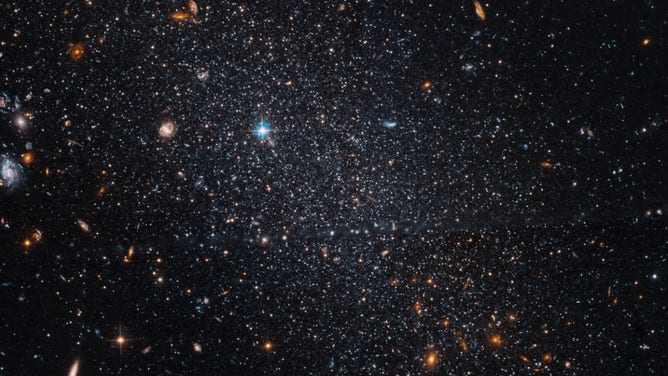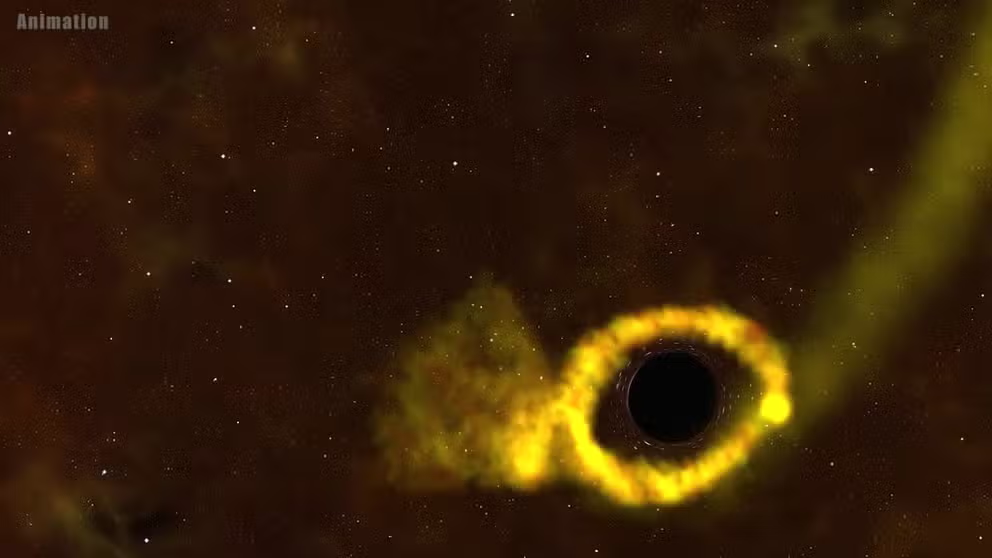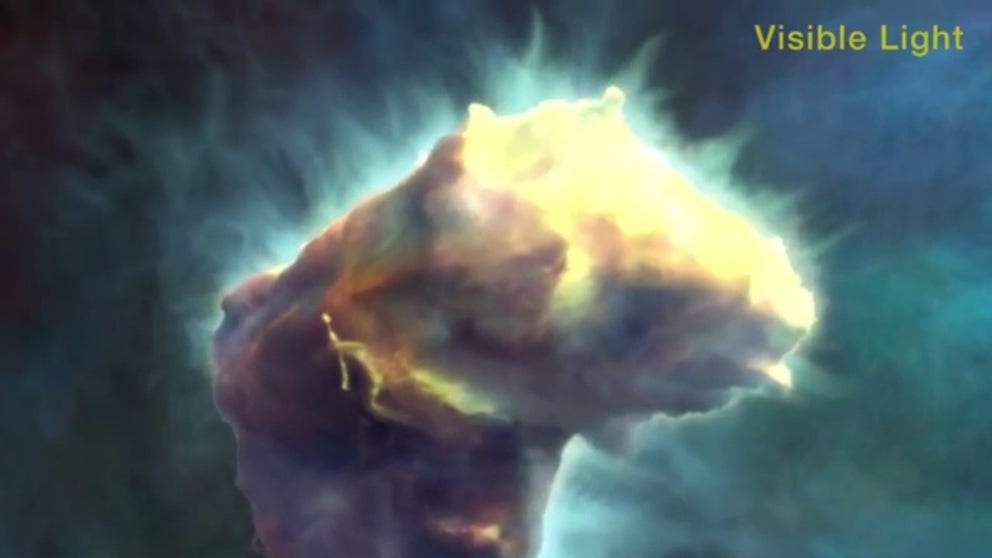Hubble telescope spots a 'lonely light in the dark' in distant dwarf galaxy
Space experts believe that studying the Tucana Dwarf galaxy could provide clues into the formation of the universe’s first stars and galaxies. The number of galaxies that exist is unknown, but estimates suggest that there could be hundreds of billions of galaxies in the observable universe.
Hubble Space Telescope used to watch black hole eat a star
Astronomers used Hubble Space Telescope's ultraviolet capabilities to investigate the death of a recently devoured star nearly 300 million light-years away. These events are known as
NASA has released a new image taken by its Hubble Space Telescope, which reveals characteristics of what is known as a dwarf galaxy, located nearly 3 million light years away.
The Tucana Dwarf galaxy was originally discovered in 1990 by astronomer R.J. Lavery and, since then, has been a point of interest to observers.
Space experts say the galaxy is much smaller and less luminous than many neighboring galaxy clusters.
"Dust is sparse and the stellar population skews towards the older range, giving them a dimmer look," NASA staff stated. "Additionally, the Tucana Dwarf lies about 3.6 million light-years from the Local Group’s center of mass, far from the Milky Way and other galaxies."
SEE THE OBJECTS HUMANS LEFT BEHIND ON THE MOON

The Tucana Dwarf galaxy is located about 3 million light-years away.
(NASA)
Scientists said they are excited to learn more about the Tucana Dwarf’s composition and believe that future studies may provide insights into the early stages of galaxy formation.
The number of galaxies that exist is unknown, but estimates suggest that there could be hundreds of billions in the observable universe.
‘Symbol of humanity’s quest for knowledge'
According to NASA, the space telescope has made more than 1.6 million observations and led to the production of over 21,000 peer-reviewed science papers on space-related discoveries.
"Hubble is not just a satellite. It’s a symbol of humanity’s quest for knowledge," John Grunsfeld, a former Hubble servicing mission astronaut and astronomer, previously stated.
LISTEN TO THE HAUNTING SOUNDS OF A BLACK HOLE
The Hubble has two primary camera systems that produce images across a broad range of wavelengths.
NASA’s James Webb Space Telescope joined the Hubble in orbit in late 2021 and is considered significantly more powerful than its counterpart.
Pillars of Creation star seen in new visualization from NASA's Hubble, Webb telescopes
Using data from NASA's Hubble and Webb space telescopes, astronomers and artists modeled the iconic Pillars of Creation in the Eagle Nebula (Messier 16 or M16) in three dimensions, creating a movie that allows viewers to fly past and among the pillars.
The Hubble Space Telescope was launched in 1990 and was named after astronomer Edwin Hubble.
Daring missions performed by astronauts and robots have extended the telescope’s operations well beyond its original lifespan.
NASA estimates that the telescope could remain in operation well into the 2030s, when it is expected to burn up upon re-entering Earth’s atmosphere.

